
Walmart is revamping its checkout process once again, and it’s not going unnoticed. The latest changes affect who can use self-checkout and how many items can be scanned. While the company hopes to reduce theft and improve store operations, customers are feeling the pinch. From item limits to member-only lanes, here’s how these new rules could affect your next Walmart run.
Self-Checkout Once Promised Convenience
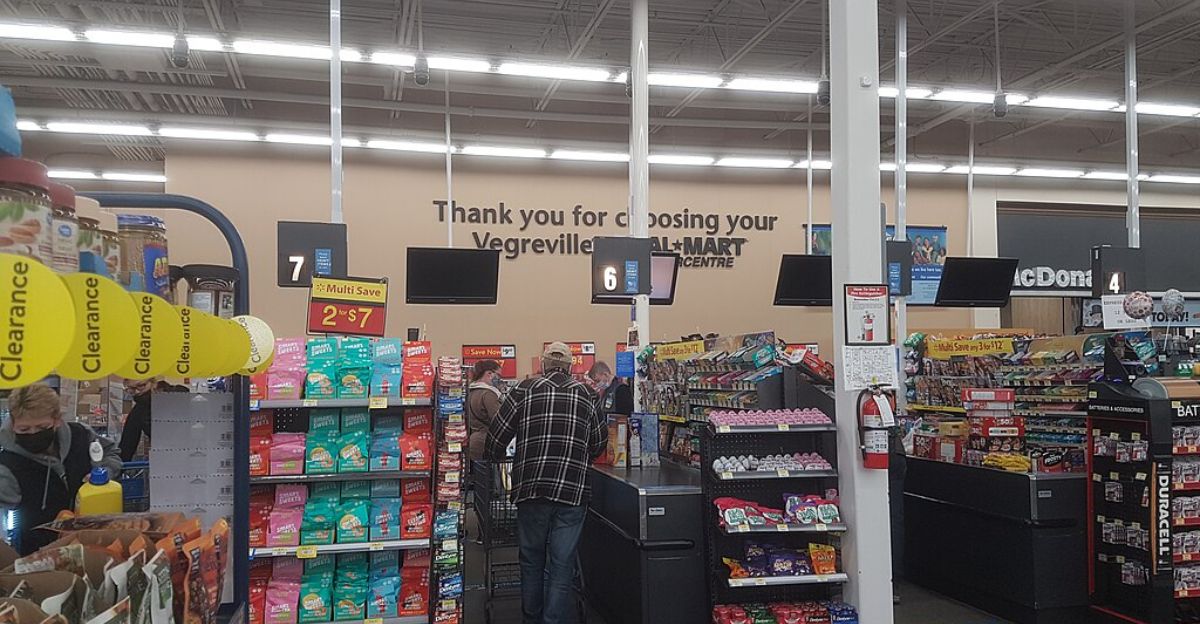
When Walmart introduced self-checkout, it was pitched as a way to speed up shopping and lower staffing costs. Customers could scan, pay, and leave, all without waiting for a cashier. It was a win-win on paper, but real-world complications started showing up fast. From machine errors to long lines, the promise of convenience didn’t always hold up.
What’s Actually Changing at Walmart?

Select stores now only allow Walmart+ members or Spark drivers to use self-checkout. Others have 15–20 item limits. Regular shoppers are often sent to staffed lanes, no matter the size of their basket. Walmart says the changes are aimed at cutting down on theft by limiting who uses the kiosks. It’s less freedom for shoppers, and some aren’t happy about it.
The Fight Between Speed and Theft

Self-checkout was supposed to make shopping faster. Instead, it brought more theft. Technology company Grabango shows that self-checkout theft is around 3.5 to 4 percent, much higher than when cashiers are involved. Scams like barcode swapping and card skimming are common. Walmart says it wants to “better manage checkout availability,” which seems to mean stopping theft without upsetting honest shoppers. But every new rule adds more steps. Now, the faster option often feels just as slow.
Theft Isn’t Just at Self-Checkout
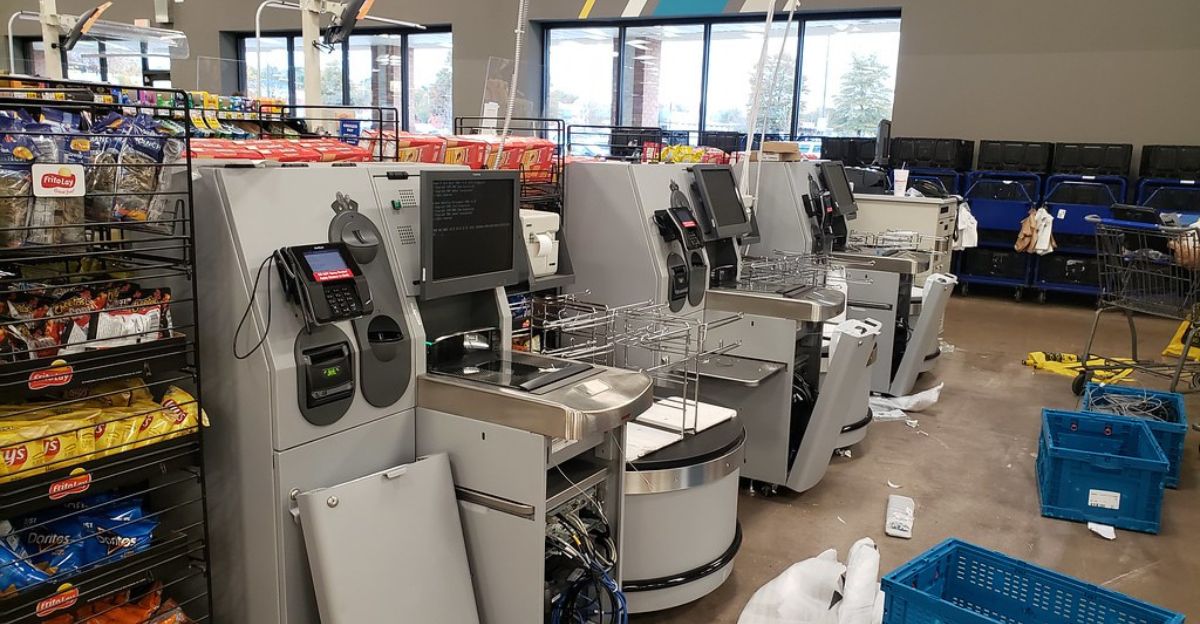
While self-checkout theft gets the headlines, many former retail workers say theft happens across the store. Commenters pointed out that cashiers have been caught skipping scans for friends, and some employees even help themselves to hot food without paying. “People have always tried to walk out without paying… bypassing checkout lanes. Happens all the time,” one ex-Walmart worker said. For some, the crackdown feels selective and incomplete.
Missouri Store Proves the Point

Walmart’s Supercenter in Shrewsbury, Missouri, removed its self-checkouts, and the impact was immediate. Police calls dropped from 509 to 183, and arrests were cut in half. In a presentation to city officials, Police Chief Lisa Vargas called the drop “huge,” according to People and The Webster-Kirkwood Times. That location is now a case study in how removing kiosks can curb theft, and it’s drawing attention from other retailers.
Who Gets to Use Self-Checkout Now?
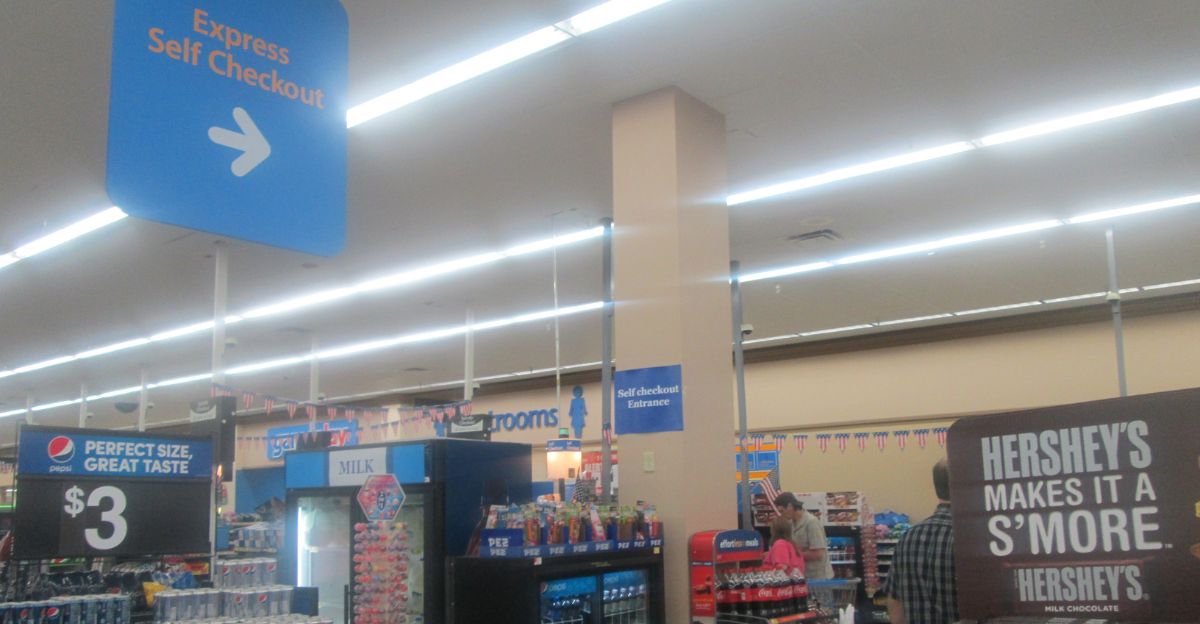
Walmart is narrowing access to self-checkout in select stores. Some locations now reserve these lanes for Walmart+ members, who pay monthly or annual fees for perks like mobile scan-and-go. Spark drivers, the gig workers who deliver Walmart orders, are also being prioritized to speed up their routes. For everyday shoppers, that means fewer lanes and longer waits.
Older Shoppers Say Self-Checkout Feels Exclusionary

Seniors unfamiliar with technology often find kiosks confusing or intimidating. Some miss the casual conversations and assistance that come with staffed lanes. Many say the return of cashiers has been a welcome shift in stores where self-checkout dominated.
Could This Drive Shoppers Away?

Some frustrated shoppers are already saying they might take their business elsewhere. Walmart’s promise of a quick checkout used to be a draw, but now it’s becoming a point of stress. The company argues these changes are necessary for efficiency and security, but it’s a gamble on how loyal customers will react.
Store Managers Make the Call
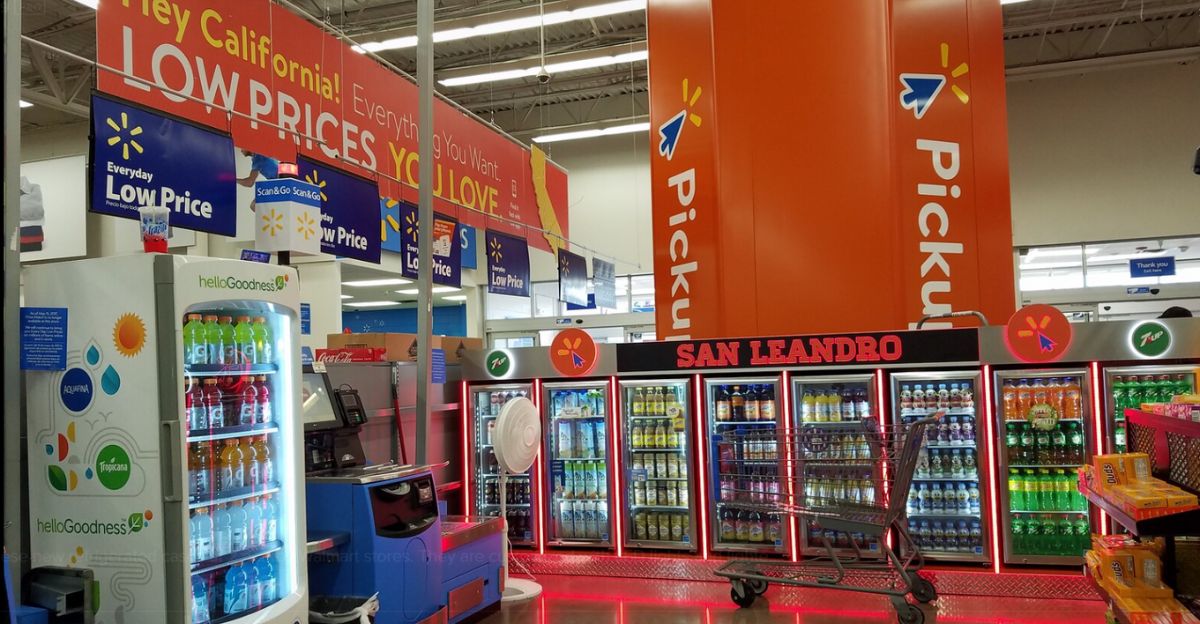
Not every Walmart store will follow the same rules. Store managers now have the power to decide who gets access to self-checkout and when. A company spokesperson stresses that individual managers “temporarily test different staffing options” and that there are “no current plans for self-checkout removals nationwide”.This approach allows flexibility, but it also leads to confusion.
Employees Have Less Oversight Power
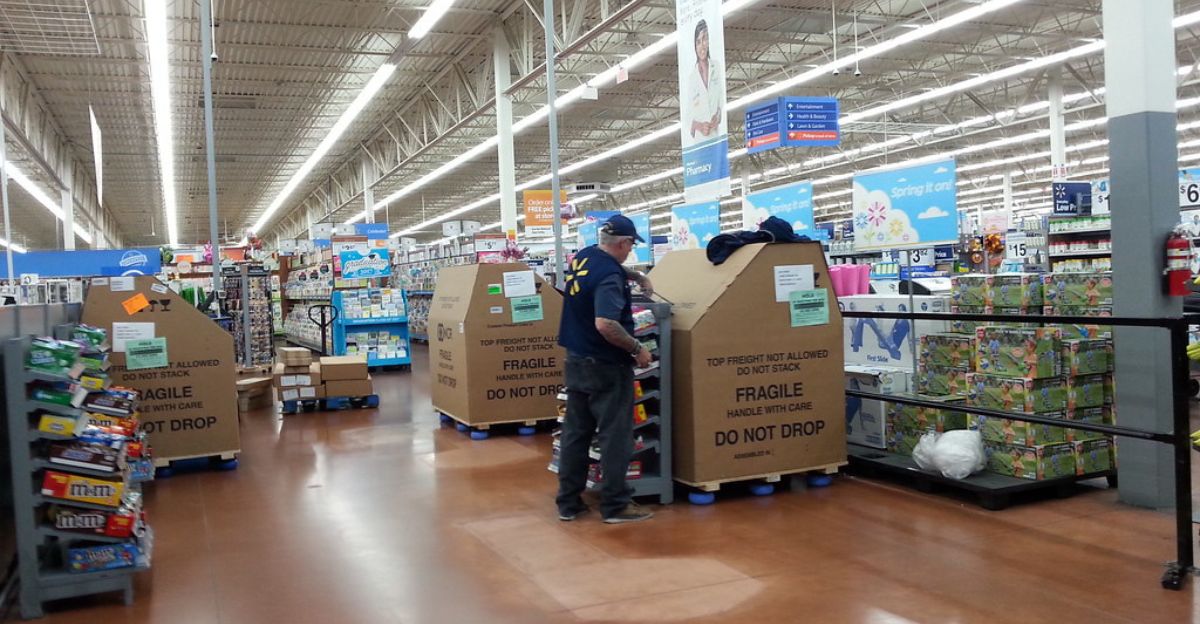
Another reason for the item cap? Staff are now restricted to supervising only one machine at a time. This rule was designed to reduce oversight fatigue and theft, but it’s also slowing down operations. With fewer employees monitoring multiple stations, even small hiccups in the checkout process can cause longer delays for everyone.
Even Competitors Are Pulling Back on Self-Checkout

Walmart isn’t the only retailer scaling back. Target now caps its “Express” lanes at 10 items, according to reports from ABC News and People. Dollar General has removed self-checkout kiosks from 12,000 stores and limits the rest to five items or fewer, as reported by CBS News and The Sun. Five Below requires staff-assisted checkout in high-shrink locations, while Kroger–Albertsons posts “about 15-item” limits with kiosk attendants. Industry reports also confirm Wegmans has discontinued its Scan & Go app following theft concerns. Across the board, retailers are trading speed for control.
Some Retailers Are Scrapping Self-Checkout Entirely
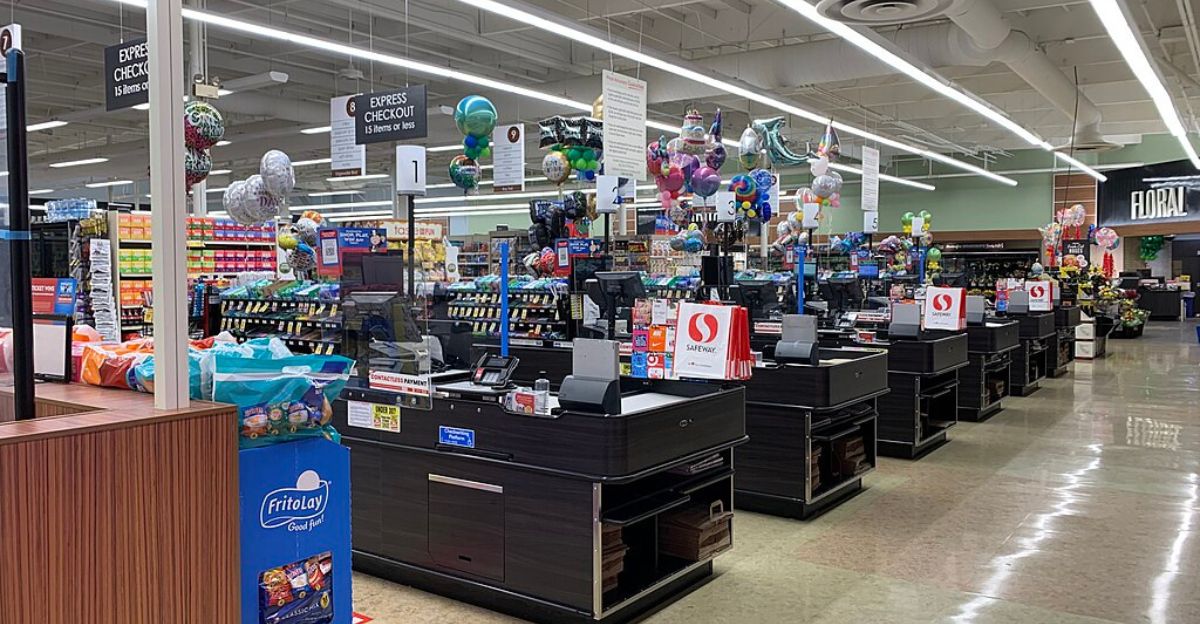
After a surge in theft this spring, Safeway removed all self-checkout kiosks from its Bay Area stores in Oakland, San Francisco, and Emeryville, as reported by KTVU. Up north, Canadian retailers Giant Tiger and Canadian Tire have also scrapped self-checkout machines entirely, according to CBC and Franchise Herald. Where technology fell short, these stores are returning to staffed registers to curb losses.
What More To Expect at Walmart’s Self-Checkout

Walmart isn’t finished adjusting its checkout strategy. With ongoing tests and new technologies in play, the company is signaling more updates in the months ahead. From mobile scanning to voice-assisted kiosks, these changes aim to blend speed, security, and service. Here’s a look at what could be coming next, and how each change might reshape the way you shop.
# 1: AI-Powered Self-Checkout Kiosks

Walmart is piloting new kiosks that use AI and computer vision to detect scanning errors and theft in real time. These smart machines guide customers through checkout with fewer mistakes and faster service. According to a strategy analysis by Cloudpick, early tests show reduced losses and quicker transactions, especially in high-theft stores. The company hopes this tech-first solution can restore some of the efficiency that’s been lost.
# 2: AI Queue Management
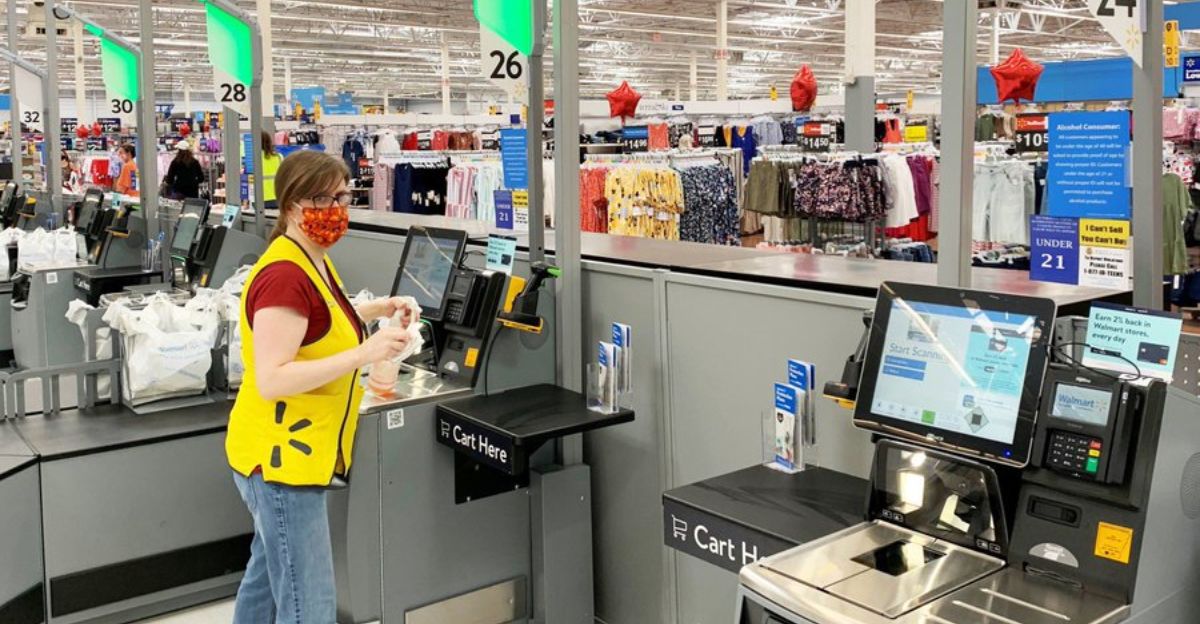
Walmart is also testing AI-powered sensors that monitor line length and adjust staffing on the fly. When checkout lanes get crowded, the system can alert employees or automatically open more stations. As reported in a Cloudpick strategy review, the goal is to reduce wait times without adding labor costs. If successful, this approach could quietly ease one of shoppers’ biggest complaints: unpredictable delays.
# 3: Voice-Guided Checkout Stations

To make checkout easier for all, Walmart is testing voice-assisted kiosks that use natural language processing. These machines walk customers through transactions step by step, especially helpful for those with vision loss or cognitive disabilities. According to a strategy report, the pilot aims to reduce frustration and expand self-checkout access to groups often left behind in tech upgrades.
# 4: RFID + AI Theft Detection

New anti-theft trials are combining RFID tags with AI-powered cameras to identify unscanned items instantly. Staff are alerted before the shopper even leaves. Cloudpick’s analysis says this system can speed up checkout by nearly 30% while catching more incidents of shrinkage. It’s part of Walmart’s push to make automation smarter, not just faster, where security has taken priority.
# 5: Hybrid Checkout Stations
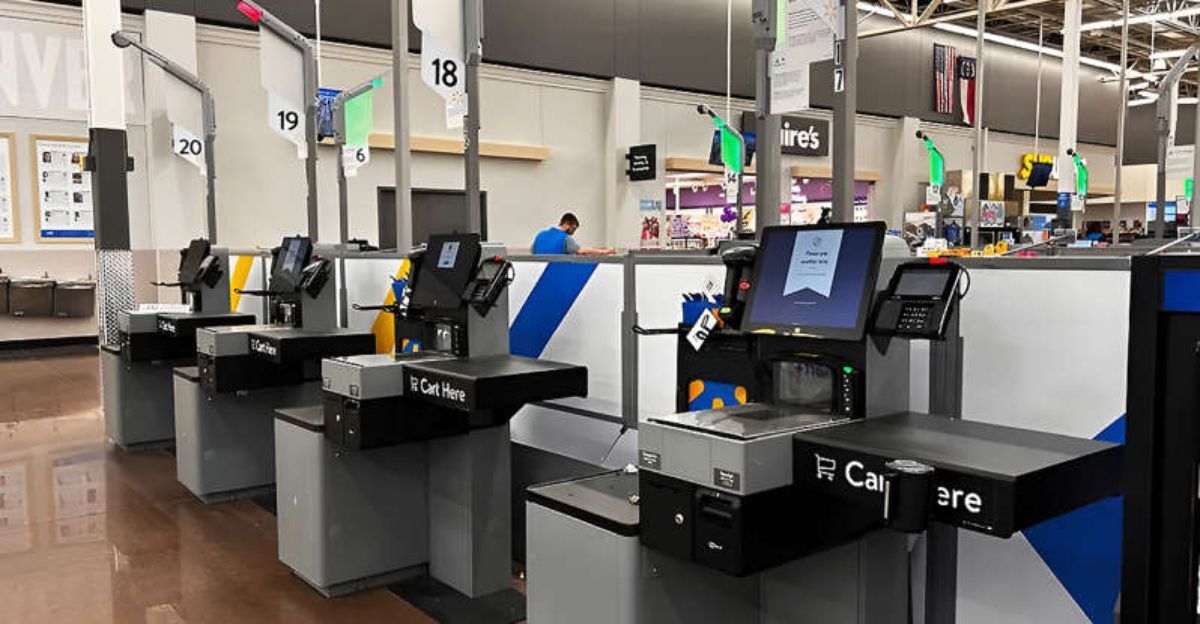
Walmart may soon roll out hybrid stations that switch between cashier-led and self-checkout depending on traffic. This model, noted in a strategy review, gives stores the flexibility to shift gears in real time. Whether you want speed or service, the same register could serve both needs, potentially reducing theft while still offering shopper choice.
# 6: Checkout Hosts as a Standard Role

Walmart plans to expand its use of checkout hosts, employees who assist with scanning, monitor for theft, and offer real-time help. According to an internal strategy summary, this role is designed to fill the service gap between traditional cashiers and full automation. It signals that even in a tech-heavy future, human support will still matter at the register.
# 7: Personalized Promotions at Checkout

With AI and customer data integration, Walmart may soon offer real-time promotions or product suggestions during checkout. These could appear on-screen during self-scan sessions or in mobile checkout apps. The goal: increase basket size and personalize the shopping experience.
The Future of Checkout Is Still Being Written
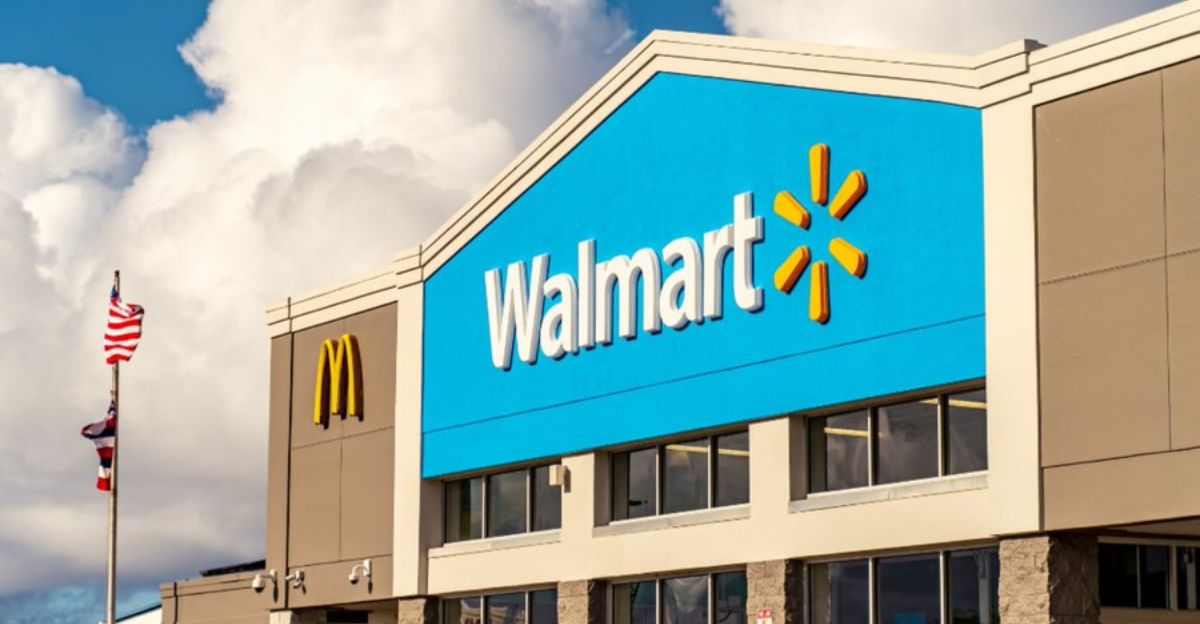
Walmart’s checkout overhaul reflects a broader retail reckoning. As theft, tech failures, and shifting customer needs collide, stores are walking a tightrope between innovation and frustration. New tools like AI and RFID promise efficiency, but they can’t replace trust or simplicity. Whether these changes improve shopping or push people away depends on how well Walmart listens, adapts, and balances profit with the customer experience.
